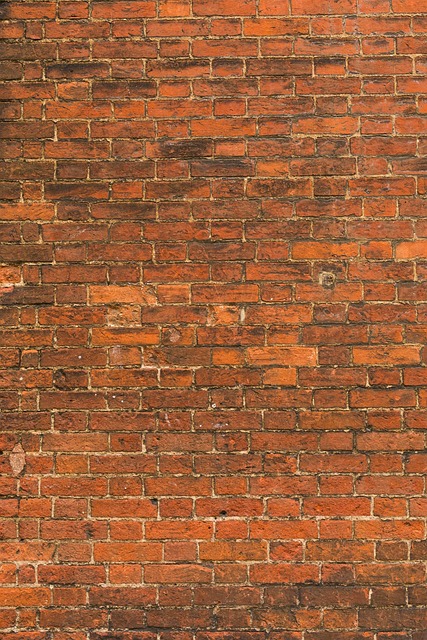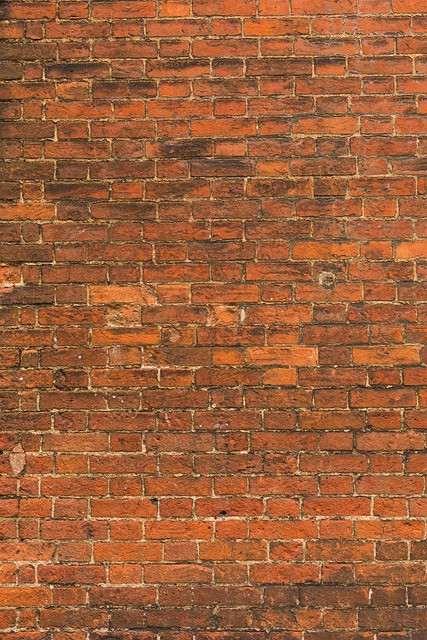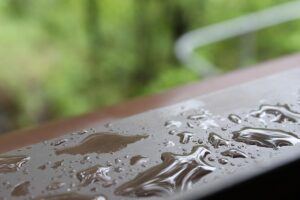TL;DR:
Grout sealing is crucial for preventing mold, mildew, and stains in high-humidity areas like bathrooms and kitchens. Implement these steps for effective grout protection:
1. Choose the Right Sealer: Select water-resistant, antimicrobial grout sealants suitable for your grout type. Consider ease of application, durability, and environmental impact.
2. Prepare and Apply: Thoroughly clean grout surfaces, then apply sealer using a brush or sprayer according to manufacturer instructions for even coverage.
3. Focus on Problem Areas: Pay special attention to corners, edges, and intricate areas prone to moisture buildup.
4. Regular Maintenance: Reapply sealer every few years or as recommended by the manufacturer. Regularly clean grout with mild detergent to remove surface stains.
5. Advanced Techniques: For enhanced protection, consider specialized coatings or membranes designed to create an impermeable barrier against water and mold spores.
By following these practices, you can significantly reduce mold growth, maintain grout aesthetics, and ensure long-term preservation of tiled surfaces.
“Discover the secrets to maintaining grout’s aesthetics and hygiene with our comprehensive guide on grout sealing. Grout, an integral part of tile installations, is susceptible to mold and stains, posing health risks and aesthetic concerns. Learn how grout sealing acts as a robust defense mechanism, protecting against these issues.
Explore essential tips for choosing and applying sealants, avoiding common mistakes, and maintaining grout’s longevity. From step-by-step guides to advanced techniques for high-risk areas, this article is your ultimate resource for achieving mold-free, stain-resistant grout.”
Understanding Grout and Its Susceptibility to Mold

Grout, a crucial component in many types of flooring and tiling, is often overlooked when it comes to maintenance and care. This substance, which fills the gaps between tiles, plays a significant role in holding surfaces together while also adding aesthetic value. However, grout’s very nature makes it susceptible to mold growth. Its porous structure allows moisture to accumulate, creating an ideal environment for fungi to thrive. Mold not only compromises the appearance of tiled areas but can also pose health risks to occupants, particularly those with respiratory conditions.
To combat this issue, grout sealing is a critical step in preventing mold and stains from forming. Sealing products create a protective barrier, filling the pores and preventing moisture absorption. This simple yet effective method not only enhances the grout’s durability but also significantly reduces the chances of mold colonization. Regular cleaning and proper ventilation further strengthen the grout’s resistance against these unsightly and harmful growths.
The Dangers of Mold in Grout: Health Risks and Aesthetic Issues

Mold growth in grout poses significant risks, both health-wise and aesthetically. When mold proliferates, it can cause respiratory issues for occupants due to its release of spores into the air. This is especially problematic in spaces with poor ventilation or where humidity levels are high, such as bathrooms and kitchens. Beyond health concerns, mold also damages grout, leading to discolored patches and an unsightly appearance. Over time, this deterioration weakens the structural integrity of surfaces, creating rough textures that are difficult to clean and maintain.
Implementing grout sealing is a proactive measure to safeguard both the health of your home’s inhabitants and the longevity of your grout. Sealing creates a protective barrier against moisture intrusion, which is crucial for preventing mold growth. By using specialized sealants designed for grout, you can guard against stains and mold, ensuring your spaces remain clean, fresh, and visually appealing.
Why Grout Sealing is Crucial for Long-Term Protection

Grout sealing is a crucial step in maintaining the integrity and aesthetics of your grout lines over time. Grout, by nature, absorbs moisture and can become a breeding ground for mold and mildew if not properly protected. Over time, this can lead to unsightly stains and discoloration, compromising the curb appeal of your space.
Effective grout sealing creates a protective barrier, preventing liquids and contaminants from seeping into the grout. This barrier is particularly important in high-moisture areas like bathrooms and kitchens where water vapor and spills are frequent occurrences. By sealing the grout, you not only safeguard against mold and stains but also extend the lifespan of your grout lines, ensuring they remain fresh and looking as good as new for years to come.
Choosing the Right Sealant for Optimal Results

When it comes to grout sealing, choosing the right product is paramount for achieving optimal results in mold prevention for grout. Not all sealants are created equal; some are better suited for specific types of grout and surfaces. Look for sealants that explicitly claim to prevent mold and stains, as these products often contain powerful antimicrobials and hydrophobic agents that repel water and prevent the growth of mold spores.
Additionally, consider factors like application ease, durability, and environmental impact when selecting a sealant. Water-based sealants, for instance, are generally more eco-friendly and easier to apply than solvent-based ones. However, they may not offer as long-lasting protection. Choosing a sealant that aligns with your needs and preferences ensures a seamless process and effective protection against mold and stains in your grout.
Applying Grout Sealants: Step-by-Step Guide

Applying grout sealants is a straightforward process that offers an effective barrier against mold, mildew, and stains. Begin by preparing the surface, ensuring it’s clean and dry to allow optimal adhesion. Next, choose a high-quality grout sealer suitable for your grout type, considering factors like water resistance and durability. Apply the sealer using a brush or sprayer, following the manufacturer’s instructions for even coverage. Let the sealer dry completely, usually within 24 hours, and then inspect for any missed spots or imperfections. If necessary, reapply for maximum protection. This simple step can significantly extend the lifespan of your grout, keeping it looking fresh and clean.
For the best results, consider using a sealant designed specifically to prevent mold growth, as these products often contain antifungal agents. During application, pay close attention to corners, edges, and intricate areas where grout meets tile or other surfaces. These zones are particularly prone to moisture buildup, making them ideal breeding grounds for mold. By sealing these spaces, you create an impenetrable barrier, ensuring your grout remains in pristine condition.
Common Mistakes to Avoid During the Sealing Process

When sealing grout to prevent mold and stains, there are several common mistakes to avoid. One of the most frequent errors is neglecting to thoroughly clean the grout before applying the sealant. Dust, dirt, and existing moisture can compromise the effectiveness of the seal, leading to poor results and potential future issues. Always ensure the grout surface is free from contaminants for optimal sealing.
Another mistake is using an inappropriate sealant for the job. Different sealants are designed for specific applications and materials. Using a sealant not suited for grout can result in inadequate protection against moisture and mold growth. Check product labels carefully and select a sealant specifically formulated for grout to ensure long-lasting protection.
Maintenance Tips to Keep Grout Looking New and Mold-Free

Regular maintenance is key to keeping grout looking new and mold-free. One of the most effective ways to prevent mold growth and stains is through proper sealing. Applying a high-quality grout sealer after installation creates an impenetrable barrier, repelling water and moisture that could lead to mold development. Reapply this sealer every few years or as recommended by the manufacturer to ensure maximum protection.
In addition to sealing, regularly cleaning your grout with a mild detergent and a soft brush will help remove any surface stains and prevent them from setting in. Pay special attention to areas with high moisture content, such as bathrooms and kitchens. Promptly addressing any signs of mold or mildew with a suitable cleaner can also stop the issue from spreading further and ensure a fresh, healthy appearance for your grout.
Advanced Techniques for High-Risk Areas

In high-risk areas prone to moisture buildup, such as bathrooms and kitchens, advanced techniques for grout sealing are essential. Grout sealing is a powerful tool in preventing mold and stains from forming in hard-to-reach crevices where water can accumulate. This involves applying specialized coatings or membranes that create an impenetrable barrier against moisture, thereby inhibiting the growth of mold spores. By implementing these high-tech solutions, homeowners and professionals can enjoy longer-lasting grout with enhanced protection against unsightly marks and harmful microorganisms.
For optimal results, consider using industry-approved sealers designed specifically for grout. These products not only repel water but also effectively seal off pores, reducing the chance of mold colonization. Regular maintenance, including deep cleaning and reapplication of sealers as needed, further strengthens the defense against mold prevention in these high-risk zones.
Case Studies: Successful Grout Sealing Projects

In numerous case studies, proper grout sealing has proven to be an effective mold prevention strategy for various projects. For instance, a recent renovation project in a humid subtropical climate showcased the importance of grout sealing. Without adequate protection, the grout between tiles quickly became susceptible to mold growth due to persistent moisture. However, by applying a high-quality, mold-resistant grout sealer before installation, the contractors significantly reduced the risk of mold and stain development. This proactive approach resulted in a long-lasting, aesthetically pleasing finish that required minimal maintenance over time.
Another successful project involved an old, historic building undergoing a restoration. The original grout was deteriorating, allowing water to seep into the joints, leading to extensive mold issues. Through comprehensive research, the restoration team selected a grout sealer designed to fill and seal pores, preventing moisture intrusion. After application, regular cleaning and monitoring revealed no new mold growth, ensuring the longevity of the building’s tiles and maintaining the structural integrity of the walls. These real-world applications demonstrate that proper grout sealing is not only a preventive measure against mold but also a key component in preserving the beauty and durability of tiled surfaces.
